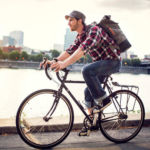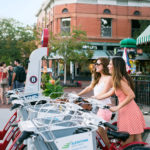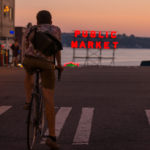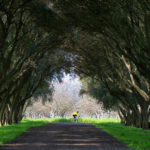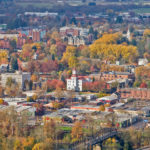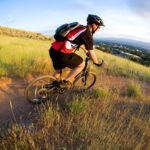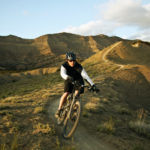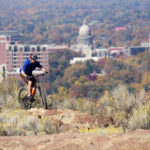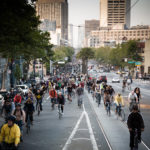Portland, OR
Since launching its Bicycle Transportation Alliance in 1990, Portland hasn’t slowed down in its efforts to become bike-central. With more than 300 miles of designated bikeways, 1,000 cycles available for public use through the BIKETOWN program, and a three-year-old bridge that was designed to exclude cars, you can get just about anywhere in the city on two wheels. It’s the preferred mode of transport for locals, too, as 7.2 percent of Portlandians opt to bike to work—a figure that’s way higher than the national average of .05 percent for urban centers. Beyond the stellar infrastructure, bike-themed events, breweries, cafés, and tours galore complete this thriving spin city.
Boulder, CO
There’s a reason most of the U.S. Pro Cycling team chooses Boulder as its homebase: The altitude, sunshine, and hilly terrain translate to optimal riding conditions. The city has worked hard to ensure cyclists feel welcome (and safe) by securing 300 miles of bikeways and setting up points of interest, like the 42-acre Valmont Bike Park, around town. And with its dozens of community rides, it’s easy to find a tribe—from the chill Thursday Night Cruiser Ride to the hard-and-fast Bus Stop Ride to the weekend Outdoor Divas Cycling tours for women.
Seattle, WA
In 2017, the highly regarded League of American Bicyclists ranked Washington number one on its list of bike-friendly states. That’s thanks in large part to initiatives in Seattle—like the pioneering dockless cycle-share program launched that same year, the massive Cascade Bicycle Club (15,000-plus members strong), and the youth empowerment program Bike Works Seattle—that all bolster the use of bikes. Follow enthusiasts to any number of cycle cafés cropping up in the city: Métier has a repair shop and gym as well as an eatery; Ventoux Roasters is located off the popular Burke-Gilman Trail; and Peloton serves up a killer lunch and Washington-brewed beers.
Davis, CA
Tucson, AZ
Corvallis, OR
Salt Lake City, UT
Download the Bikeways Map to find mountainous terrain, bike parking and locker options, urban trails, and shared lanes all around Salt Lake County. A quick glance at the map (which can be set up to work with your smartphone’s GPS for easy navigation) shows the power of bikes in the region—everywhere you look there is existing infrastructure or something coming. In the summer of 2017, Swiss bike giant Assos opened its first U.S. office in SLC, further solidifying the city’s burgeoning cycling scene.
Fruita, CO
This high-desert town on the southwestern edge of Colorado used to be recognized as an alternative to Moab within a select bunch of in-the-know mountain bikers. In the last few years, the town has taken center stage. Here, hundreds of miles of trails—from flowy singletracks to barely climbable grinders—stem from three main trailheads, all boasting epic canyon vistas. Meanwhile, nearby Grand Junction and Palisades continue to blossom into destination food and wine regions. Together, it makes for the ideal weekend of wining and riding.
Boise, ID
San Francisco, CA
After planting Vision Zero, an initiative designed to cut out 100 percent of traffic-related deaths, San Francisco swiftly moved to ID and eliminate cyclist danger zones. Several main arteries now have parking-protected bike lanes, in which riders are separated from the main road by a row of parked cars. Furthermore, groups like San Francisco Bicycling Coalition offer free classes to tackle one of the most intimidating factors in urban cycling: learning the rules of the road. The bike-advocacy roots run deep here too, as the city is known as one of the first places to host a Critical Mass to fight for the right to pedal safely.
